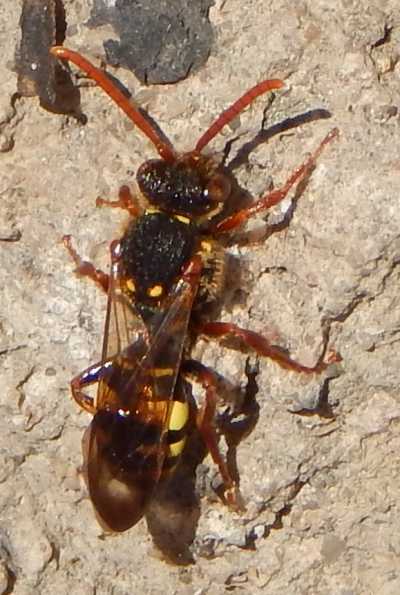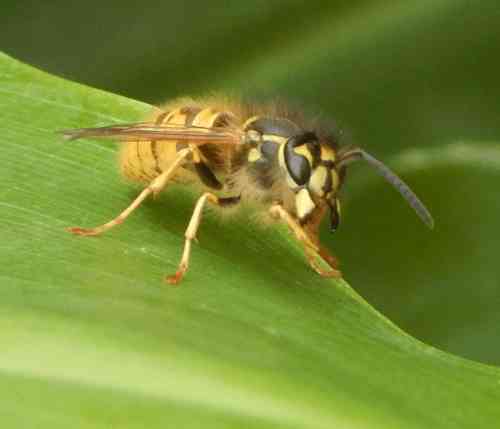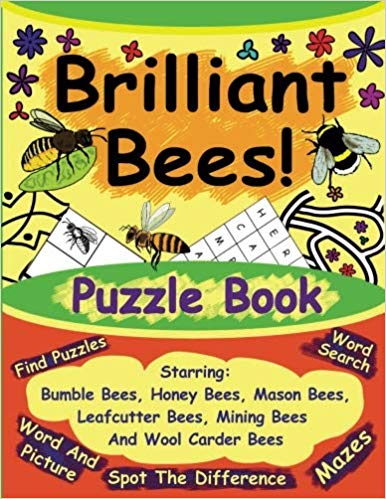How Do Wasps Make Nests In Trees?
Have you ever found a wasp nest hanging from a tree branch, and wondered how wasps make nests in trees?
Or perhaps you are wondering what wasp nests are made of, and who constructs the nest (the wasp queen, or workers?).
Thanks to Kaitlyn from upstate New York, who has sent me some wonderful images, I have been inspired to answer these questions.
How do wasps make nests in trees?
Firstly, lets take a look at a completed aerial (hanging) wasp nest.
In the image below from Kaitlyn, you gain an excellent perspective as to the size of a typical aerial, social wasp nest. It's perhaps the size of a ball used in soccer, or maybe a small to average-sized beach ball. The shape of this nest is tapered at the bottom. The top of the nest is attached to the tree branch.
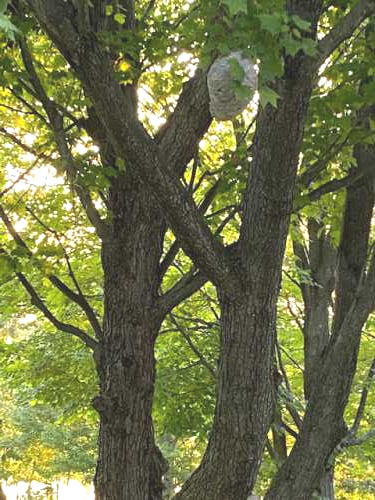 Kaitlyn's photograph shows a wasp nest hanging high up in a tree.
Kaitlyn's photograph shows a wasp nest hanging high up in a tree.What are wasp nests made of?
It really depends on the species, but in the case of wasp nests like this one pictured, it is made from slithers of wood and plant material, chewed together to make a pulp.
This pulp is then stuck together in layers, resembling small leaves of paper - in fact, it could be said that wasps invented paper, and humans copied the invention around 2000 years ago (see more amazing facts about wasps).
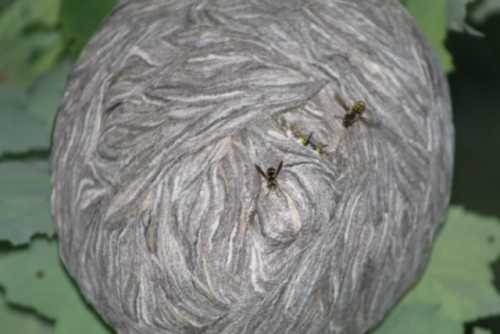 Kaitlyn has capture a close up picture, showing a couple of wasps on the outside of the nest. Note the appearance of layers, stuck together to look like numerous leaves.
Kaitlyn has capture a close up picture, showing a couple of wasps on the outside of the nest. Note the appearance of layers, stuck together to look like numerous leaves.Which wasps make the nest and how do wasps manage to stick the nest to the tree?
When building a wasp nest in a tree, the wasp queen and founder of the colony will begin the process by gathering tiny slithers of wood and plant fibre, which she will chew into a pulp.
She will begin adhering this pulp to a selected tree branch to form layers, gradually building more layers, and inside, constructing the first of many hexagonal shaped cells reminiscent of honeycomb.
The wasp queen will continue building until she has built sufficient cells in which young workers can be reared. See: wasp life cycle.
When the young worker wasps emerge from the these new nest cells, they will take over the process of nest building and foraging for food for the young (during which, the wasps will help with pollination of flowers and plants, of course!).
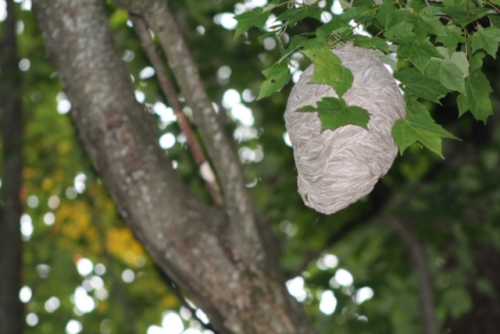 I love this image from Kaitlyn, It's a great view of the shape of the nest among the tree branches.
I love this image from Kaitlyn, It's a great view of the shape of the nest among the tree branches.
The fact that this is a social wasp nest means that at its peak, there will be a few thousand very busy wasps, all helping to maintain the colony.
If you are wondering what the inside of a wasp nest like this looks like, I have a page dedicated to this question, see: the structure of a social wasp nest.
Do all wasps make nests in trees?
Are all wasp nests the same shape?
No, different types of wasps use a variety of cavities for the rearing of their offspring. Some species create more of an irregular mass underground whilst other wasp species do not create a 'nest' as such.
Gall wasps lay their eggs in the stems, leaves, buds or twigs of trees and plants, and cause galls to form that will then feed and house their offspring. .
The enchanting potter wasp has a different method of nest construction - watch the video of this beautiful little wasp below, as she gathers mud, creates neat little pots in which to lay her eggs, then disguises them with more mud:
However, of those wasps which do create aerial nests in trees, some are more spherical in shape, whilst others appear more elongated. To see a variety of different forms, see my general page about wasp nests.
Are wasp nests in trees dangerous?
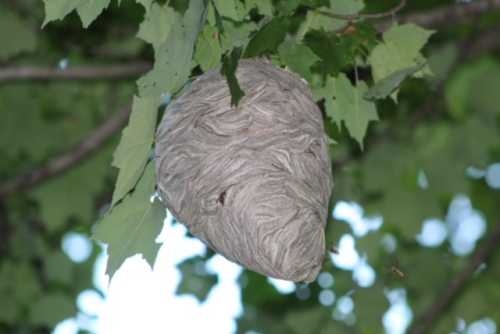 Another wonderful image from Kaitlyn, and a great view of the nest.
Another wonderful image from Kaitlyn, and a great view of the nest.It is my honest view, and based on personal experience and feedback from multiple visitors that generally, an aerial wasp nest should not cause a problem if it is left alone, and not aggravated.
Of course, a sting is possible - just as it's also possible to get bitten by a mosquito. If concerned, wearing a deet-free insect repellent is advisable, along with keeping away from the nest.
I find keeping calm and being respectful works. It's the kind of calmness Kaitlyn had when she stood directly beneath the nest and snapped this image below. I have practical advice on preventing wasp stings if you are concerned.
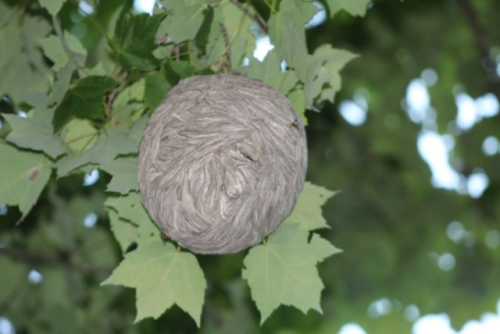 An image by Kaitlyn from underneath the same nest.
An image by Kaitlyn from underneath the same nest.
As an aside, I have wasps around my plums every year, and I have never been stung by a wasp in my life. I also don't worry if the wasps eat a few plums, I can spare it. They did, after all, definitely help pollinate my raspberries. As I write, it's August, I have a new crop of plums due, and I still haven't eaten last year's that are in the freezer!
I realize not everyone can remain calm and that stings can happen. However, I also encourage visitors to read about the experiences of others with wasp nests.
Resources to read
I recommend a book called: A Wasp Builds a Nest: See Inside a Paper Wasp's Nest and Watch It Grow by Kate Scarborough and Martin Camm.
Further pages on this site:
If you found this page helpful or interesting, I'd really be grateful if you would share it with others - if not this page, perhaps another, such as Gardening For Bees.
Thank you so much :) .

